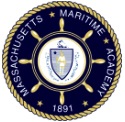MT-1121
STCW Basic Training
Course Description
This course will teach students to react in a correct manner during fire and other emergency situations, and how to identify and correct deficiencies and thus prevent emergencies from occurring. The student will learn the proper use of fire fighting equipment and the measures to take in the event of a fire. The student will learn the proper use of survival equipment, and how to respond to emergency situations and take measures appropriate to his own survival and to the survival of others. The student will demonstrate the necessary knowledge, understanding in these areas. [Lab time required]
Learning Objectives
Demonstrate knowledge and understanding of the following STCW elements:
- AB-D-A1.1 Ability to understand orders
- AB-D-A1.2 Procedures for the relief and handover of a watch
- AB-D-A1.2 Procedures for maintenance of a navigational watch
- AB-D-A1.3 Information required to maintain a safe navigation watch
- AB-D-C2.1 Line handling
- AB-D-C4.2 Knowledge of survival at sea techniques
- FF-X1.1 Shipboard fire-fighting organization
- FF-X1.2 Location of fire-fighting appliances and emergency escape routes
- FF-X2.1 Fire-fighting equipment and its location on board
- FF-X2.2 fixed installations
- OICEW-A1.3 Immediate actions to be taken in the event of fire or accident, with particular reference to oil systems
- OICEW-A3.1 Operation of all internal communication systems on board
- OICEW-D4.1 Launching appliances and arrangements
- OICEW-D4.1 Survival craft equipment
- OICEW-D8.1 Knowledge of personal survival techniques
- OICNW-A5.3 Appreciation of the procedures to be followed for responding to emergencies which arise in port
- OICNW-C4.1 Launching appliances and arrangements
- OICNW-C4.1 Survival craft equipment
- OICNW-C8.1 Knowledge of personal survival techniques
- PS-SR-X1.10 Knowledge of shipboard contingency plans for response to emergencies
- PS-SR-X1.11 Emergency signals and specific duties allocated to crew members in the muster list
- PS-SR-X1.11 Muster stations
- PS-SR-X1.11 Correct use of personal safety equipment (survival gear)
- PS-SR-X1.12 Action to take on discovering potential emergency, including fire, collision, foundering and ingress of water into the ship
- PS-SR-X1.13 Action to take on hearing emergency alarm signals
- PS-SR-X1.14 Value of training and drills
- PS-SR-X1.15 Escape routes
- PS-SR-X1.15 Internal communication and alarm systems
- PS-SR-X1.9 Types of emergency which may occur, such as collision, fire, foundering
- PS-X1.1 Types of emergency situations which may occur, such as collision, fire, foundering
- PS-X1.2 Types of life-saving appliances normally carried on ships
- PS-X1.3 Equipment in survival craft
- PS-X1.4 Location of personal life-saving appliances
- PS-X1.5 Value of training and drills
- PS-X1.5 Personal protective clothing and equipment
- PS-X1.5 Need to be ready for any emergency
- PS-X1.5 Actions to be taken when called to survival craft stations
- PS-X1.5 Actions to be taken when required to abandon ship
- PS-X1.5 Actions to be taken when in the water
- PS-X1.5 Actions to be taken when aboard a survival craft
- PS-X1.5 Main dangers to survivors
- RFPEW-A1.5 Use of internal communication systems
- RFPEW-A3.1 Knowledge of emergency duties
- RFPNW-X2.1 Responsibilities of a look-out
- RFPNW-X2.1 Reporting the approximate bearing of a sound signal, light or other object in degrees or points
- RFPNW-X3.1 Shipboard terms and definitions
- RFPNW-X3.2 Use of appropriate internal communication and alarm systems
- RFPNW-X3.3 Ability to understand orders
- RFPNW-X3.3 Ability to communicate with the officer of the watch on matters relevant to watchkeeping duties
- RFPNW-X3.4 Procedures for the relief, maintenance and handover of a watch
- RFPNW-X3.5 Information required to maintain a safe watch
- RFPNW-X4.1 Knowledge of emergency duties and alarm signals
Demonstrate proficiency in the following skills:
- PS-2 Don and use an immersion suit
